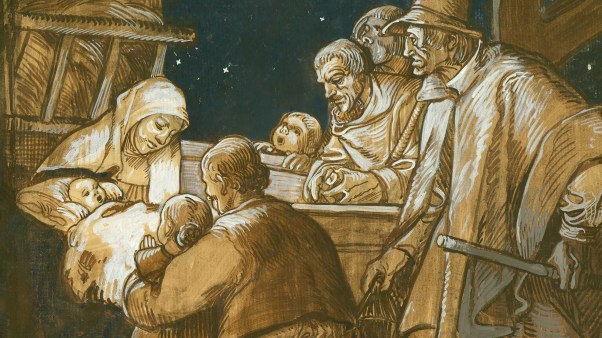In 1911 as William Durham denounced the “second blessing” doctrine of sanctification, a young woman attacked him with her hat pin to register her “pointed opposition.” She was not alone in her contempt for his “demonic” views. The conflict over sanctification had burst forth a year earlier and had became the first full-blown controversy of the Pentecostal movement.
The early Pentecostal movement arose from the Holiness movement, and like its parent, shared John Wesley’s views on sanctification: that it was an instantaneous experience of “entire sanctification” or “Christian perfection” and that it was a separate experience from conversion. Early Pentecostals called it a “second blessing” and regarded it as a necessary preparation for a third experience, the indwelling of the Holy Spirit (that is, the new Pentecostal experience).
In 1910, William H. Durham, pastor of the North Avenue Mission in Chicago, began making waves throughout Pentecostal circles when he denounced these views. “I began to write against the doctrine that it takes two works of grace to save and cleanse a man,” he later wrote. “I denied and still deny that God does not deal with the nature of sin at conversion. I deny that a man who is converted or born again is outwardly washed and cleansed but that his heart is left unclean with enmity against God in it.”
This wouldn’t be salvation, he argued, because salvation “means that all the old man, or old nature, which was sinful and depraved and which was the very thing in us that was condemned, is crucified with Christ.” He dubbed his position the “finished work at Calvary” because he believed the work of Christ on the cross was sufficient for both salvation and sanctification. Finished-work Pentecostals slowly also came to stress a gradual process of sanctification, not an instantaneous one, in which the sanctifying work of Christ was “appropriated” over one’s life.
Locked out of Azusa
Durham returned to the Azusa Mission in 1911 (where he had received the gift of tongues in 1906). William Seymour was on a preaching tour, and Durham was invited to preach. His finished-work teaching generated conflict but sparked a fresh revival. Wrote one observer, “The fire began to fall at old Azusa as at the beginning.” But when Seymour heard what was going on, he promptly returned and padlocked the church door to prevent the Chicago preacher from speaking further in his pulpit. Undaunted, Durham moved to a rival mission and continued proclaiming his message.
From his home in Kansas, Charles Parham (by then dropping rapidly out of the Pentecostal spotlight) declared, “If this man’s doctrine is true, let my life go out to prove it, but if our teaching on a definite grace of sanctification is true, let his life pay the forfeit.” When Durham passed away unexpectedly later that year, Parham claimed vindication and remarked to his followers “how signally God has answered.”
Despite such ardent denunciation, Durham’s interpretation emerged as the preferred theological position for roughly half of all Pentecostals by 1915. Most of the denominations formed as Holiness bodies prior to the Pentecostal outpouring remained staunch supporters of the second-blessing doctrine, while newer organizations, including the Assemblies of God, either left the matter open to individuals or adopted the finished-work view. It is today the view of most American Pentecostals.
James R. Goff, Jr., is professor of history at Appalachian State University in Boone, North Carolina.
Copyright © 1998 by the author or Christianity Today/Christian History magazine. Click here for reprint information on Christian History.










